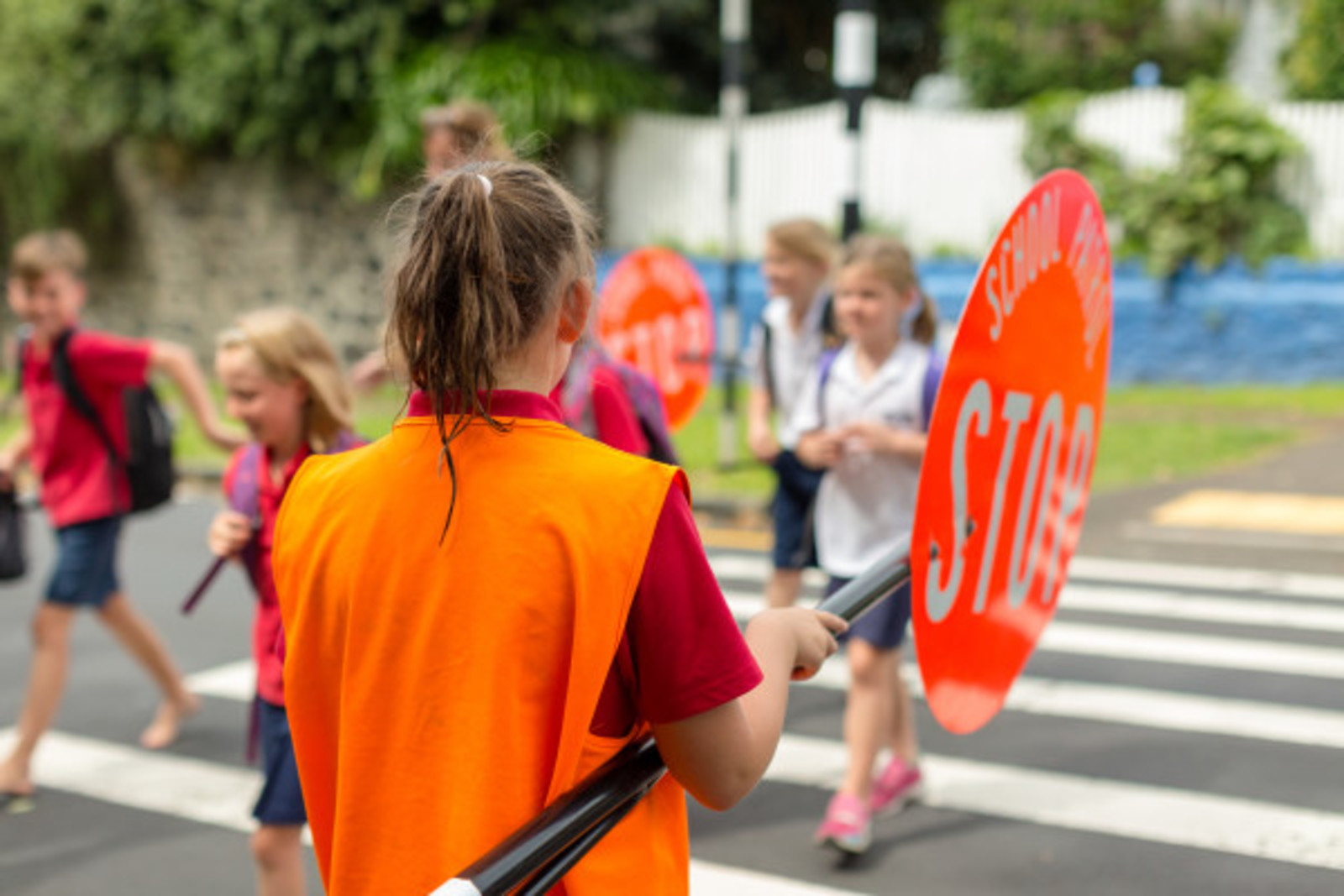Child pedestrians: 5 - 9 years

How big a problem is it?
Walking is an essential part of children’s lives. It provides an opportunity for them to learn about their environment, explore their surroundings, and improve their fitness. Unfortunately, however, children’s small size and lack of judgement puts them at a greater risk of being injured or killed as pedestrians. In New Zealand, injury to child pedestrians is a leading cause of traffic-related deaths and injuries. In New Zealand, more than six children are killed each year from a pedestrian-related injury.
Who does it affect?
In the period 2013-2017, around 50 children aged between 5-9 years were hospitalised for a pedestrian injury. Māori and Pacific children (0-14 years) are at least 3-4 times more likely to be hospitalised for pedestrian injuries than European children.
Top Tips
When there's no pedestrian crossing, be patient and cross the road only when it's safe to do so (it takes time for a vehicle to stop).
Then use the kerb drill:
Stop one step back from the kerb.
Look and listen for traffic coming from all directions.
If there is traffic coming, wait until it has passed and then look and listen for traffic again.
If there is no traffic coming, walk quickly straight across the road.
While crossing, look and listen for traffic, wherever it may come from.
Explain why it’s important to watch, wait and listen for passing cars before crossing the street, and to make eye contact with drivers before crossing in front of them.
Teach your children to put their phones down and keep their heads up when crossing the road. This is particularly important for pre-teens who are easily distracted by their devices.
Make sure that, where possible, your children know to use footpaths. If there isn’t one, tell them to walk facing the traffic, keeping to the far right.
Children under 10 years should always cross the street with an adult. This is because they have trouble judging car speeds and distances up until this age.
Remind your children to look out for sneaky driveways.
Have a walking plan for getting to school, participate in School Travel Plan and, if possible, join a Walking School Bus.
First Aid
If your child injured in a crash, they may have bone fracture or a serious head injury. If they and are in pain or for any of the following reasons, call 111 immediately. Do this if your child:
|
There are also some things you can do straight away:
Fractures First Aid
Keep the injured arm or leg still. Someone who knows how to might use a splint to keep it still.
You can support the injured arm or leg with a pillow or sling.
Raise the arm or leg higher than the heart to help reduce swelling.
Your child will need pain relief.
If your child does not need an ambulance take them to the nearest hospital Emergency Department
Loss of consciousness First Aid
Follow Drs ABCD for start CPR
D Dangers? Check for any dangers to yourself such as electricity or traffic.
R Responsive? Check responsiveness by calling loudly and shaking the child's arm.
S Send for help. Dial 111 and confirm an ambulance is on its way. Use the appropriate emergency number in other countries.
A Airway. Open the airway by moving the head into a neutral position and lifting the chin. Do not tilt the head back too far.
B Breathing. Look and feel for movement of the lower chest and stomach area. Listen and feel for air coming from the nose or mouth.
C CPR. If the child is not breathing, start CPR - 30 compressions to 2 breaths. Put the child on a firm surface. Place 2 fingers of one hand (for a baby) or the heel of one hand (for a child) in the centre of the chest just below the nipples. Push down hard and fast 30 times in about 15 seconds (push down one-third of chest depth).
Once you have completed 30 compressions (pushes) on the chest, breathe into the baby's mouth 2 times. Seal your lips around the baby's mouth and nose. For a child over 1, you may need to breathe into their mouth and pinch their nose closed. Gently puff into the child until you see their chest rise.
Continue with the cycle of 30 chest compressions and 2 breaths until the ambulance arrives.
D Defibrillator. Attach defibrillator as soon as it is available and follow prompts.
The CPR advice is from the KidsHealth website and a page containing the Basic Life Support Flow Chart. The Basic Life Support Flow Chart is developed by the New Zealand Resuscitation Council and Australian Resuscitation Council. For more information see www.nrc.org.nz
Link to Safekids’ resources
Child Pedestrian Injury Prevention Resources
Links to other organisations’ resources
